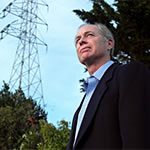The growth rate in renewable energy in America, solar and wind in particular, is nothing less than exhilarating. Solar capacity in the United States has increased 418 percent since 2010, while wind energy constituted 30 percent of new electricity-generating capacity added to the US power grid in 2013.
This is just the beginning, according to analysts. Falling equipment prices, in combination with state and federal incentive programs, have fueled the growth, but further gains are also expected from lowering soft costs, which will help keep payback periods and rates of return acceptable to investors if and when subsidies expire.
Legal and financial instruments around renewable energy already play a big role. The relationships between owners, installers, developers, and other project participants require “bankable” contracts to allocate risks properly and to meet financing requirements. Wind and sun may be as old as time, but the contractual structures and financial models to harness them continue to evolve as new markets are served against a shifting policy backdrop.
Enter the lawyers and financiers. Attorney John Spilman, with Cleantech Law Partners in San Francisco, and Shiraz Madan, CEO of Sustainable Capital Finance in San Jose, California, focus their talents exclusively on renewable energy. Madan prescribes a simple way to size up the full potential of commercial scale solar: Look outside airplane windows. “When you’re on a plane and descending into a city, you can see the vast area of rooftops that have yet to install solar systems,” he says.

Shiraz Madan is the CEO of Sustainable Capital Finance.
Big box stores, school campuses, and factories are good examples of facilities that can support solar projects connected “behind the meter.” These serve high on-site energy demands at prices that beat retail rates otherwise payable to the local utility. In a different scenario, airplane hangars, warehouses, public storage facilities, and parking garages have large rooftops but low electricity needs. To tap their rooftop solar as a revenue stream, feed-in tariffs (FIT) for wholesale provision of the power to the local utility are necessary.
An example of this working successfully is the 100 MW program launched by the Los Angeles Department of Water and Power in February 2013; applications from homeowners and businesses exceeded the first phase’s needs, leading to a second round for the program.
The legal territory for renewables is complex. Consider the patchwork of energy policies at the state and federal levels, and how those policies can change from year to year. “It’s one of the biggest challenges, absolutely,” Spilman says. “For example, consider how the Production Tax Credit [which fostered the growth of wind energy] is never extended by more than a couple years into the future. It’s very hard for those companies to plan.” The Investment Tax Credit that the solar industry relies on is set to end by 2016.
More than 30 attorneys provide the Cleantech Law Partners network with a range of expertise. The solar practice is most active in the West and Northeast, while wind energy is increasingly concentrated in the Great Plains states. Their services cover the gamut from contracts to regulatory work, permitting, litigation, incorporation, land use, intellectual property, insurance, and tribal lands law. A solar enterprise will often need two or more legal specialties in different project phases.
“The game changer in the commercial rooftop market will be when contracts, and the methodologies for assessing and rating commercial credit risk, become truly standardized, allowing for higher volumes of closings and securitization of these assets in the public capital markets,” Spilman says. Madan adds that the standardization of contracts and evaluation metrics will help answer important investor questions and ultimately enable solar-asset-backed investment products.
For example, an aggregation of multiple rooftop and ground-mounted solar installations can be presented as a single investment portfolio. “It makes projects viable that might not be financed as stand-alone projects, and it speeds up the financing process from about six months to between 30 and 90 days,” Madan says.
All those roofs we see from the air are a tantalizing glimpse at the future of green energy. With the help of progressive attorneys and financing experts working behind the scenes, we may soon notice an increase in how many come clad in photovoltaic arrays.

